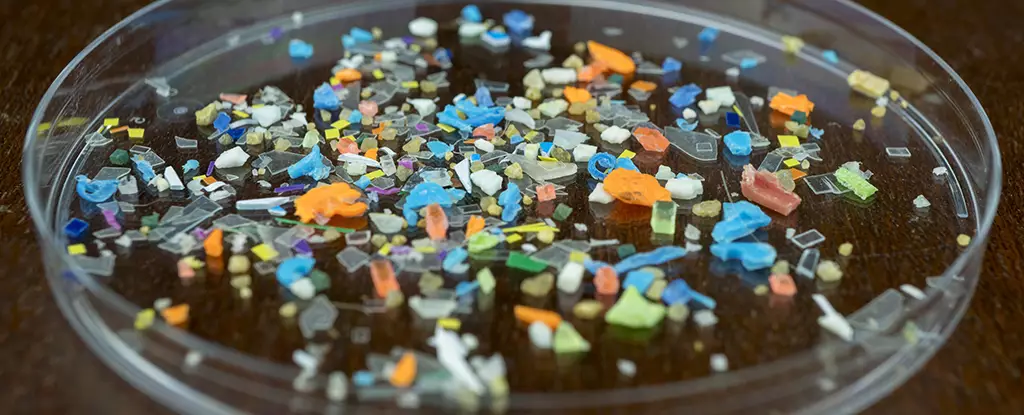Amidst our daily lives, a silent yet pervasive danger lurks—microplastics. These minute plastic particles, stemming from various sources such as packaging, textiles, and petrochemicals, now permeate our environment and food chain. The emerging tide of research reveals that microplastics are not merely a nuisance for the ecosystem; they pose tangible risks to our health, especially concerning gut integrity. A recent study spearheaded by researchers at Taiwan’s National Cheng Kung University highlights the potential for these tiny contaminants to wreak havoc on our gastrointestinal health, marking a crucial chapter in the ongoing conversation about environmental toxicity.
The Study: Methodology and Findings
The aforementioned research involved a detailed examination of the effects of polystyrene nanoplastics on mice over a 12-week period. The use of nanoplastics, measuring a mere 100 nanometers—especially crucial considering that they are thousands of times smaller than a human hair—allows researchers to glean insights into the microscopic impacts these pollutants have. Through rigorous analysis of protein production, gene expression, and fluctuations in gut microbiota, the findings unveiled a dire picture: essential proteins that maintain gut integrity were significantly reduced, and the delicate balance of beneficial and harmful gut bacteria was disrupted. Notably, the reduction of Lactobacillus—a keystone of gut health—was found alongside an increase in potentially harmful bacteria, specifically Ruminococcaceae.
This significant alteration in microbial composition didn’t stop there. A curious interaction emerged as the bacteria Lachnospiraceae began to consume some of the nanoplastics, leading to an increase in the secretion of extracellular vesicles. This phenomenon inhibited the production of intestinal mucus, integral for gut protection, showcasing a direct link between nanoplastic exposure and gut degradation at the cellular level.
Implications of Nanoplastic Disruption
What stands out in this research is how the effects of ingesting microplastics unfold at a molecular level. Wei-Hsuan Hsu, the leading microbiologist of the study, underlined that this research marks a pioneer point in demonstrating how plastic particles disrupt communication between host organisms and gut microbes. This mechanism is critical—not only does it expose the vulnerability of gut health, but it underscores the complex interactions between environmental contaminants and our biological systems.
Though the study presents groundbreaking insights, it necessitates caution in interpretation. Mice serve as a vital model organism in biomedical research, yet they are not perfect analogs for human physiology. The concentrations of nanoplastics administered in the study exceeded what an average human may encounter daily, raising questions about the applicability of these findings to human health.
The Need for Broader Research
Despite the limitations, the implications of this research resonate strongly in the ongoing dialogue about plastic pollution. Concerns regarding the cumulative effects of microplastics are mounting, as they infiltrate our air, water, and ultimately, our bodies. Immunologist Yueh-Hsia Luo emphasizes the urgent need for comprehensive research into the long-term impacts of nanoplastics on human health. Current detection technologies for these particles are limited, complicating our understanding of exposure levels.
Furthermore, with plastics becoming a ubiquitous contaminant in global waters and food sources, it is quintessential to develop better detection methods to estimate human exposure accurately. The insights drawn from this study not only point to immediate health concerns but also highlight the need for environmental awareness and regulatory reforms that combat plastic pollution on a broader scale.
Cultural Shifts Towards Plastic Reduction
Moving forward, addressing the microplastics crisis requires a multidisciplinary approach. Public consciousness around environmental health must evolve, with greater emphasis placed on responsible consumption and innovative solutions for plastic reduction and recycling. As consumers, we hold power in our choices, and fostering a culture of sustainability can lead to meaningful changes.
Furthermore, continuous engagement between policymakers, scientists, and the public is crucial in driving this dialogue forward. It’s time to take these alarming findings seriously and place a spotlight on preventing the intrusion of microplastics into our bodies. Comprehending the probable ramifications of microplastic exposure is the first step towards safeguarding our health and environment against this insidious threat.

